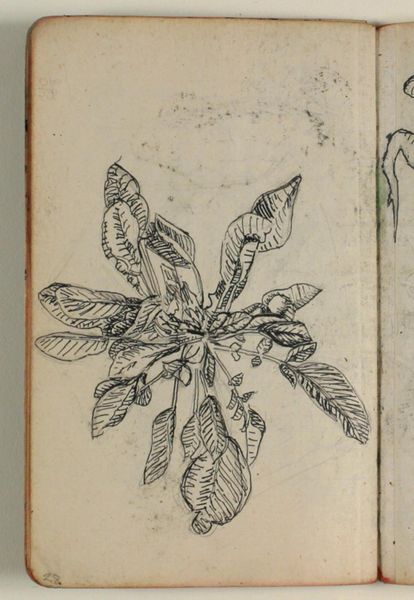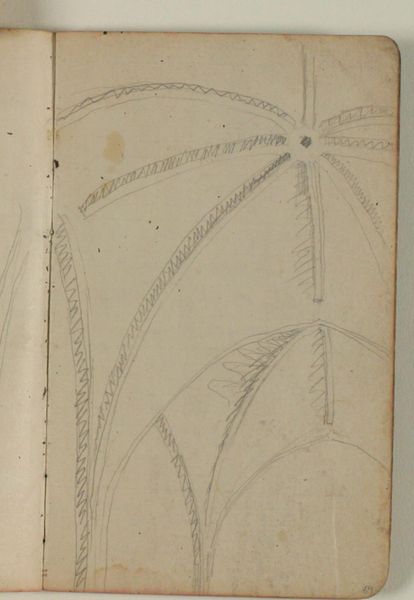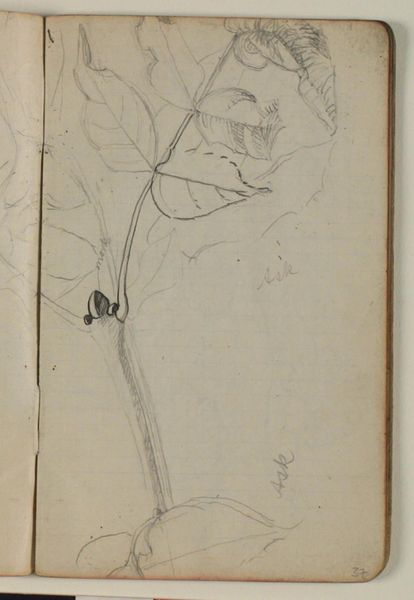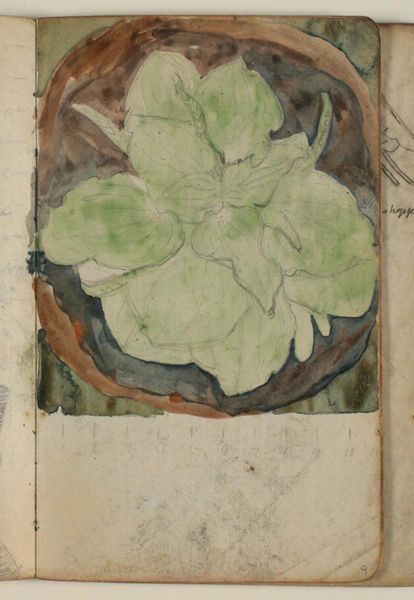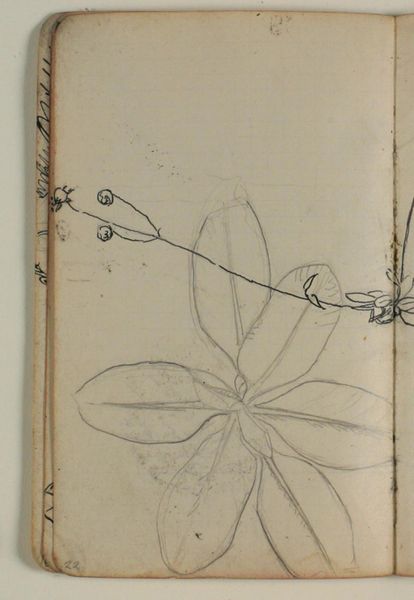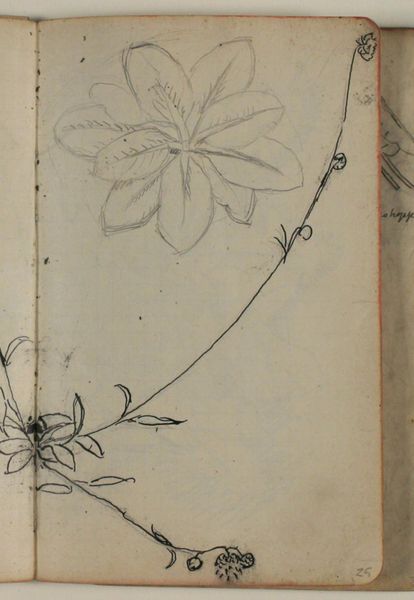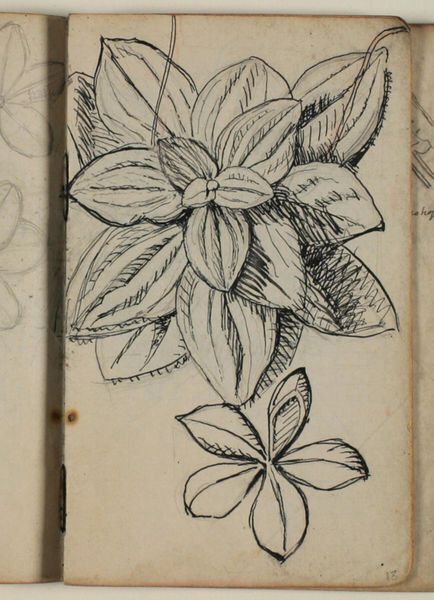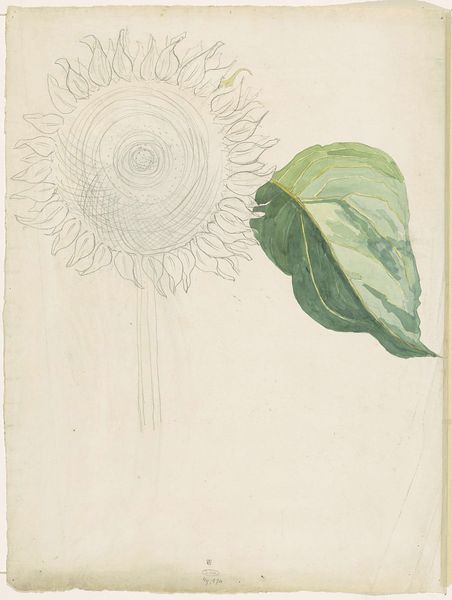
Dimensions: 161 mm (height) x 96 mm (width) (bladmaal)
Curator: Welcome. Today, we’re exploring "Plantestudier," a series of plant studies created between 1906 and 1910 by Niels Larsen Stevns. They are a delightful array of drawings rendered with watercolor and colored pencil on paper, found here at the SMK. Editor: There's a raw immediacy that’s very appealing. You can almost feel the artist’s hand moving across the page. The washes of watercolor give it a hazy, dreamlike quality, while other parts are just simple, almost clinical, pencil outlines. Curator: Absolutely. These studies give us insights into the art academies of the early twentieth century and into Stevns' broader engagement with organic forms. He used the natural world, often flowers and vegetation, as springboards for Symbolist and spiritual reflections. Editor: It makes me think about the scientific illustration of the time and wonder about the tension, if any, between art and science during that period. Was Stevns trying to categorize nature, or find something more expressive within it? I find myself reflecting on this plant form as a symbol for the organic relationship between people, environment and creativity. Curator: That tension was indeed present. While he aimed for a scientific accuracy in botanical form, he certainly infused his observations with personal expression. He was actively engaged in redefining the role of religious art, working outside the constraints of the church. For Stevns the organic and detailed plant-life would often serve as a spiritual conduit. Editor: The delicate use of color, particularly that soft yellow behind the blooming portion, strikes me. It’s not quite naturalistic, and yet it evokes a strong sense of warmth and light. How might the impressionistic techniques have factored into representing a shift in environmental attitudes or an awareness towards land? Curator: Impressionism freed artists from strict representational accuracy, so it aligns with that more emotionally-charged experience of nature, allowing him to capture not just what he saw, but how he felt. In a time of increasing industrialization and, by extension, detachment from natural systems, a closer artistic inspection into flora would be particularly poignant. Editor: I see this dialogue between feeling and structure mirrored even within the composition. Some parts have the free and flowing watercolors while other areas remain simple outlined structure. Thank you for offering context to this work and providing lenses to explore these botanical studies! Curator: My pleasure! By considering the historical moment and artistic currents, we can start to unpack its significance today, so that we can appreciate its nuanced story within art history.
Comments
No comments
Be the first to comment and join the conversation on the ultimate creative platform.
